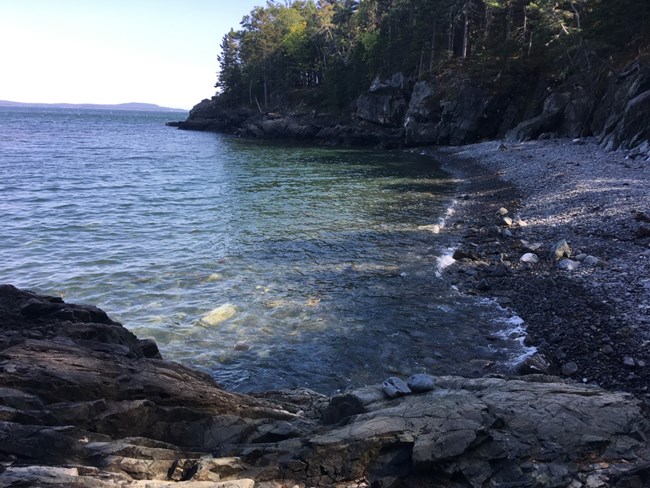Last updated: October 5, 2020
Article
What Am I Swimming With?

NPS Photo
Have you ever gone swimming and wondered what might be living in that pond or lake? What about the ocean?
In the waters of Acadia National Park, you might spot fish, crustaceans, and amphibians, and many other living creatures. But have you thought about everything that lives in the water that you can’t see?
Living in every body of water within Acadia National Park are innumerable microscopic organisms known as plankton. Plankton are microscopic plants and animals that drift through water without swimming on their own.In a single tablespoon of ocean water, there can be hundreds of thousands of planktonic organisms. There are two main types of plankton – phytoplankton and zooplankton.
Phytoplankton
Plankton that are able to photosynthesize are called phytoplankton. Like other plants, they use sunlight to create energy. Phytoplankton form the base of the marine food web, providing a food source for other planktons and larger animals. Phytoplankton are also important for the amount of oxygen they create.
Zooplankton
Plankton that consume other living things to survive are known as zooplankton. Zooplankton are commonly eaten by almost all fish larvae, meaning they are an important part of the food web that eventually leads up to us, humans. Without plankton for these fish larvae to consume, the entire ecosystem based on plankton would not survive.
While plankton can be a very important part of Acadia’s aquatic ecosystems, too much of a good thing can be bad. With too many nutrients available, phytoplankton can grow out of control, leading to what is known as an algal bloom. These blooms can be harmful to fish, mammals, and even humans.
However, without an algal bloom event, plankton is perfectly safe to swim with. Enjoy your time swimming in the lakes and ponds of Mount Desert Island, and the cold crisp waters of the Atlantic Ocean, now knowing what you are swimming with.
